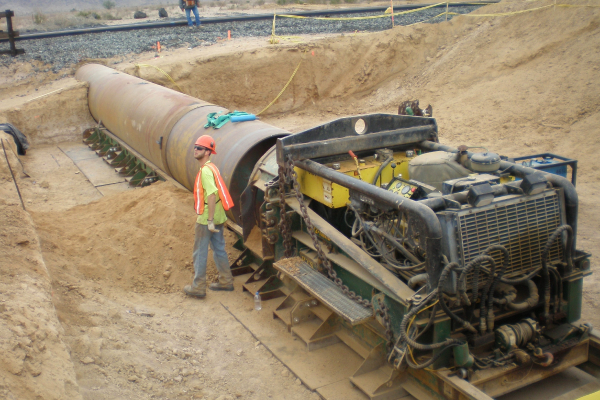As infrastructure development surges globally, trenchless technologies continue to evolve, enabling more efficient, safer, and environmentally conscious construction practices. Among these methods, the auger boring machine has proven to be a mainstay in horizontal boring, particularly for pipe installation beneath roads, railways, and other surface obstructions.
As we move into 2025 and beyond, the industry is witnessing a shift in design and functionality driven by digital innovation, environmental regulations, and the increasing demand for cost-effective operations. The modern auger boring machine is no longer just a mechanical solution—it’s part of an integrated system that includes automation, monitoring, and data analytics.
This article explores the top trends shaping the next generation of auger boring machine technology and how contractors, engineers, and equipment manufacturers are responding to the demands of modern infrastructure challenges.
1. Integration of Smart Technology and IoT
One of the most significant developments in auger boring machine design is the integration of smart sensors and Internet of Things (IoT) technology. Machines equipped with real-time monitoring capabilities can provide critical data on parameters such as torque, pressure, soil resistance, and machine health.
These sensors help operators make informed decisions during boring operations, minimizing the risk of mechanical failure and improving job accuracy. By collecting operational data, construction firms can also implement predictive maintenance strategies, reducing downtime and extending the life of the machine.
IoT-enabled auger boring machines also support remote diagnostics, allowing manufacturers or service teams to troubleshoot issues without the need for on-site visits, further improving efficiency.
2. Enhanced Operator Interfaces and Automation
The role of the operator is becoming increasingly sophisticated as user interfaces evolve. Modern auger boring machines are being designed with intuitive touchscreen displays, ergonomic controls, and semi-automated features that reduce the need for manual intervention.
Automation is particularly useful in repetitive boring tasks, where consistency is key. Features such as automated thrust control, automated pipe pushing, and bore tracking systems reduce human error and improve bore quality. While fully autonomous auger boring machines are still in development stages, partial automation is already improving productivity and reducing labor requirements.
Additionally, training operators has become easier with virtual interfaces and simulation-based learning modules, helping contractors quickly onboard skilled personnel.
3. Sustainability and Environmental Compliance
In an era where environmental impact is under intense scrutiny, auger boring machine manufacturers are redesigning equipment to meet stricter sustainability standards. This includes integrating fuel-efficient engines that meet Tier 4 or Stage V emission regulations and designing machines with reduced noise and vibration profiles.
Moreover, many new machines are built with biodegradable hydraulic fluids, low-emission power sources, and recyclable materials to minimize their ecological footprint. Some equipment manufacturers are also exploring hybrid or fully electric powertrains for smaller boring machines used in urban or environmentally sensitive areas.
This focus on sustainability not only aligns with government regulations but also serves the growing expectations of clients and communities demanding greener construction practices.
4. Compact Designs for Urban Utility Projects
As cities expand and underground infrastructure becomes increasingly congested, contractors require auger boring machines that can perform in confined urban environments. In response, manufacturers are developing compact and modular machines with smaller footprints, without sacrificing power or performance.
These machines are ideal for tight-access utility installations such as water lines, telecommunications, and gas pipelines. Features like foldable tracks, detachable components, and simplified mobilization make it easier to deploy these machines in dense neighborhoods or restricted job sites.
This trend also supports increased demand for microtunneling and pilot tube-guided boring, where precise control and minimal disturbance are paramount.
5. Material and Component Durability
Durability remains a cornerstone of auger boring machine design, especially for equipment operating in abrasive or rocky soil conditions. In 2025, we’re seeing a shift toward advanced materials and coatings that prolong the life of wear parts such as cutting heads, augers, and drive components.
Hard-faced or carbide-tipped cutting tools, reinforced auger shafts, and corrosion-resistant housings are now more common. These upgrades reduce the frequency of part replacements and contribute to lower long-term maintenance costs.
Manufacturers are also incorporating modular component designs, allowing for easier part replacement and upgrades without replacing the entire system. This enhances the value proposition for contractors looking for longevity and adaptability in their equipment investments.
6. Digital Project Integration and BIM Compatibility
Construction sites today are increasingly adopting Building Information Modeling (BIM) and other digital project management tools. To stay aligned, auger boring machine manufacturers are designing machines that can interface with these platforms.
By syncing boring machine telemetry with project management systems, contractors can track progress in real-time, validate bore paths, and ensure alignment with as-built models. This enhances transparency and allows for more efficient coordination across multi-disciplinary teams.
Digital integration also supports compliance documentation, where bore logs and equipment usage reports can be automatically generated and stored for auditing or future reference.
7. Safety Enhancements and Ergonomic Innovations
Worker safety remains a top priority in all aspects of construction equipment design. The next-generation auger boring machine includes safety innovations such as automatic shutoffs, overload protection, and advanced guarding systems to protect operators from rotating components.
Ergonomic improvements—such as better seating, climate-controlled cabins, and reduced manual lifting components—also help prevent operator fatigue and injuries, contributing to overall job site safety.
Many machines now feature wireless remote controls, allowing operators to control functions from a safe distance, particularly when working near traffic, unstable soils, or confined trenches.
Looking Ahead: What’s Next?
As we progress into the next decade, the auger boring machine will continue to evolve in tandem with smart construction practices, stricter environmental standards, and the global push for infrastructure modernization. Machine learning, remote operation, and even integration with autonomous construction fleets are on the horizon.
Manufacturers that focus on user-centric design, operational efficiency, and digital integration will lead the industry forward. Contractors, in turn, will benefit from equipment that not only bores through the earth but also through old limitations of time, cost, and complexity.
Conclusion
The auger boring machine has come a long way from its purely mechanical origins. Today’s designs are shaped by innovation, precision, and responsiveness to the changing needs of the construction world. Whether it’s automation, sustainability, or digital integration, these trends are setting the standard for how horizontal boring will be done in 2025 and beyond.


